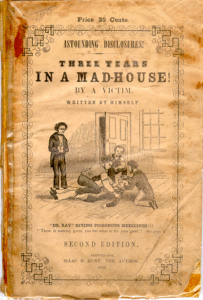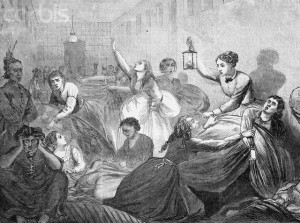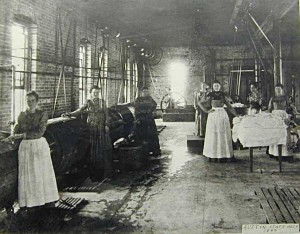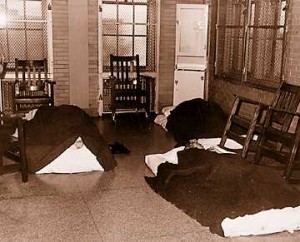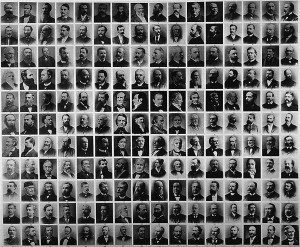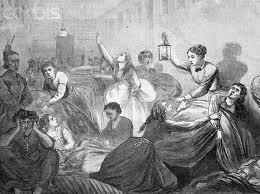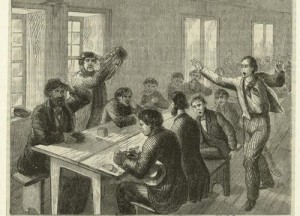One of the worst kinds of abuse patients at insane asylums suffered occurred simply because of the situation. Many patients were tricked into accompanying relatives or friends to an asylum, or to a sanity commission that had been convened to arrange for commitment. Elizabeth Stone recounted her own commitment as this kind of deception. Her brother asked her to take a ride with him and conveyed her to McLean Asylum , where he abruptly left her without telling her where she was and what was going on. Stone was distressed beyond words when she finally realized what had happened, and later wrote: “O! That a dagger had been plunged into my heart in the midnight hour!”
Once in an asylum, many patients were frightened, angry, and bewildered. Many were distraught and emotionally overwhelmed by a sense of betrayal and shock at what had occurred. Women from sheltered homes were often terrified by the chaos around them. Patient accounts speak of real fear–of both patients and doctors whom they did not trust–and fear that they would never be released. Some learned to adapt and become model patients, hoping that by exhibiting desirable behavior, they might be set free. For far too many, the trip to the asylum was the last trip they would every make. By the time family members committed a person to an asylum, they were generally ready to be rid of him or her for a very long time.
______________________________________________________________________________________
